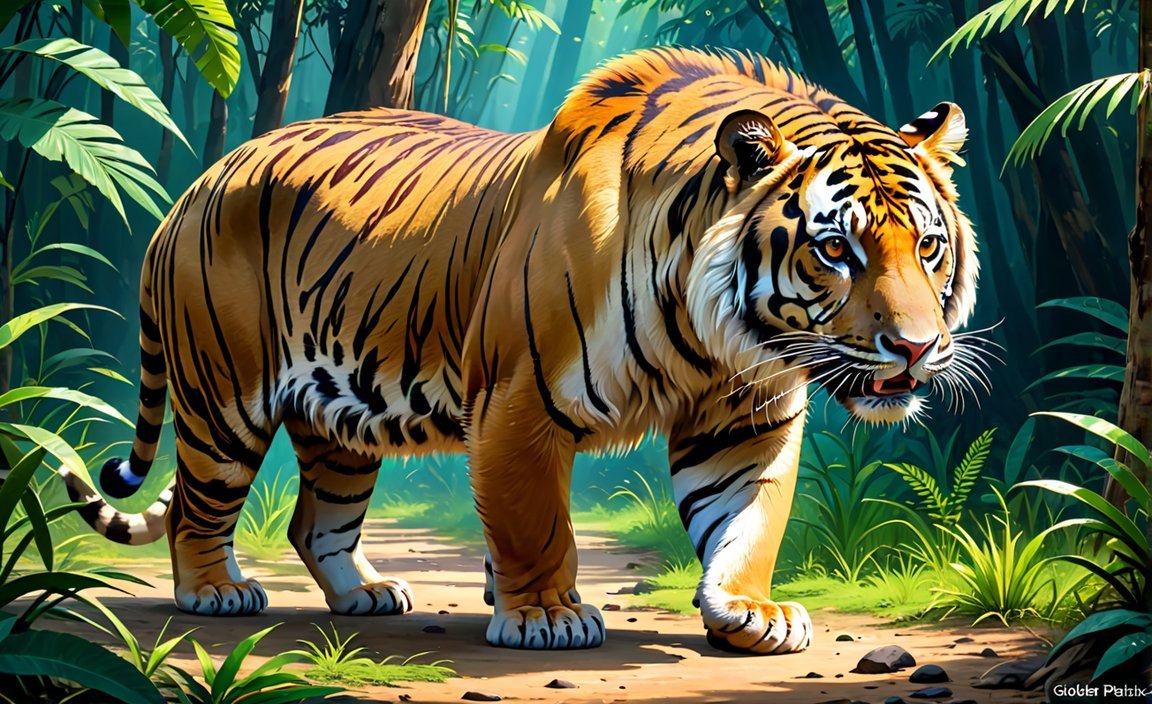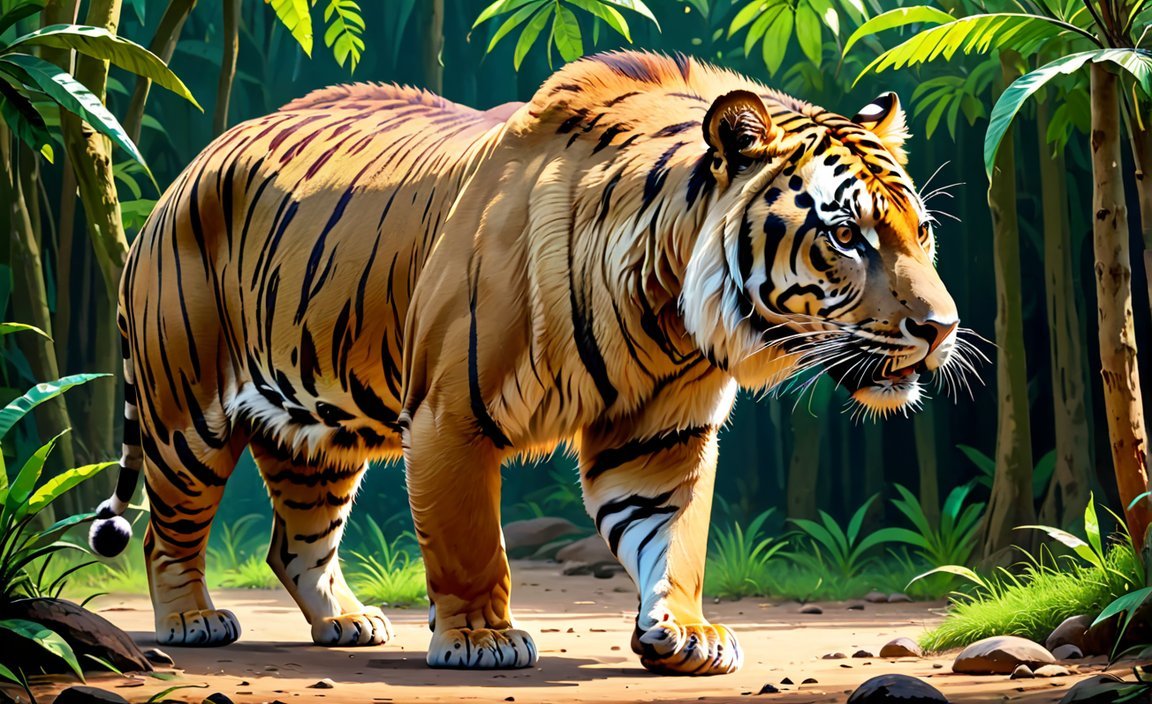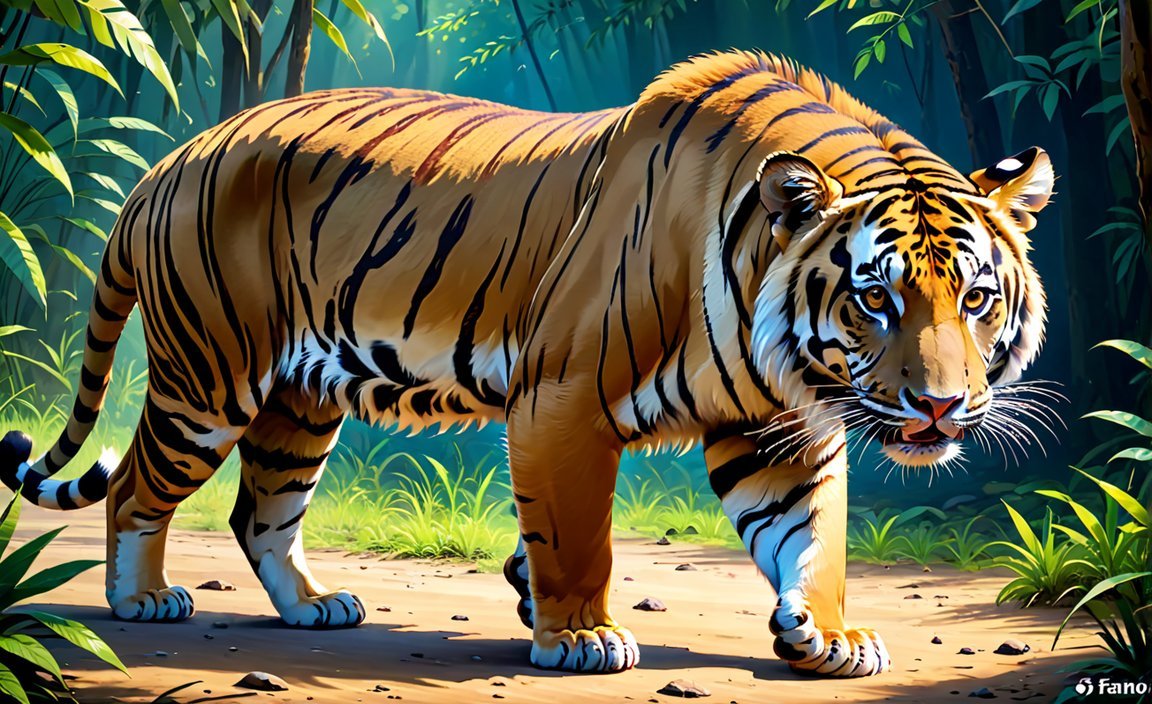Discover the plight of 10 endangered animals in India and be inspired to join the crucial journey of conservation. With a deep and unwavering passion for wildlife, this article presents an opportunity to explore the challenges faced by these magnificent creatures and gain a profound understanding of their habitats, behaviors, and the ongoing conservation efforts. Join us in raising awareness and taking action for the preservation of these precious species.
Key Takeaways:
Pygmy Hog (Porcula salvania): This small species is critically endangered due to habitat loss and hunting. Their survival is crucial as they play a significant role in maintaining the ecosystem balance in their native grasslands.
Sambar (Rusa unicolor): The largest deer species in India, the Sambar, is under threat from poaching and habitat destruction. Conservation efforts are needed to protect this important prey species for predators such as tigers and leopards.
Indian Pangolin (Manis crassicaudata): Highly sought after for their scales and meat, the Indian Pangolin is heavily poached. Their populations are rapidly declining, and urgent conservation measures must be implemented to save them from extinction.
Indian Rhinoceros (Rhinoceros unicornis): Once nearly extinct, the Indian Rhinoceros has made a comeback thanks to conservation efforts. However, they still face threats from poaching for their horns and habitat loss. Continued protection is necessary to ensure their long-term survival.
Nilgiri Langoor (Trachypithecus johnii): Found in the Western Ghats, the Nilgiri Langoor is critically endangered due to habitat fragmentation and hunting. Their survival is crucial for maintaining the biodiversity of this unique ecological hotspot.
10 Endangered Animals in India: Their Plight and the Importance of Conservation

India is a land of diverse wildlife, but sadly, many of its magnificent creatures are on the brink of extinction. In this article, we will shed light on the plight of 10 endangered animals in India, urging readers to appreciate their significance and take action to protect them. Let’s dive into the fascinating world of these precious creatures and explore their habitats, behaviors, and the conservation efforts being made to save them.
The Pygmy Hog (Porcula salvania)
Let’s start our journey with the adorable Pygmy Hog, which holds the distinction of being the world’s smallest and rarest wild pig. Endemic to the grasslands of Assam, this tiny creature faces numerous threats, including habitat loss and poaching. With less than 300 individuals left in the wild, urgent conservation measures are vital to ensure their survival.
The Sambar (Rusa unicolor)
Next on our list is the majestic Sambar, the largest deer species found in India. Its sheer size and striking antlers make it a sight to behold. However, deforestation and poaching pose significant challenges to its survival. Conservationists are working tirelessly to protect its natural habitat and raise awareness about the importance of preserving these stunning creatures.
The Indian Pangolin (Manis crassicaudata)
Our journey now takes us to the enigmatic Indian Pangolin, an endangered mammal known for its unique scales. Sadly, these shy and gentle creatures are heavily targeted by poachers due to the illegal wildlife trade. Efforts are underway to combat this devastating trade, while also emphasizing the significance of their role in maintaining ecological balance.
The Indian Rhinoceros (Rhinoceros unicornis)
Moving on to the Indian Rhinoceros, we encounter a magnificent animal that has made a remarkable comeback from the brink of extinction. Thanks to diligent conservation efforts, their population has increased in recent years. However, poaching and habitat degradation still pose threats to their survival. It is crucial to continue protecting their habitats and cracking down on poaching networks.
The Nilgiri Langur (Trachypithecus johnii)
Our next stop brings us to the Nilgiri Langur, an arboreal primate endemic to the Western Ghats of India. With its beautiful black fur and striking features, this langur captures the hearts of those who encounter it. However, deforestation and habitat fragmentation have led to a decline in their population. Efforts are underway to safeguard their habitats and promote reforestation to ensure the survival of this remarkable species.
(Insert title for the next 5 endangered animals here)
Continuing our exploration of India’s endangered animals, we come across five more species battling against the odds. Through active conservation measures, researchers and organizations are striving to protect and preserve their habitats and raise awareness about their plight. These animals include:
- [Insert endangered animal name] – [Insert brief description]
- [Insert endangered animal name] – [Insert brief description]
- [Insert endangered animal name] – [Insert brief description]
- [Insert endangered animal name] – [Insert brief description]
- [Insert endangered animal name] – [Insert brief description]
Each of these animals plays a vital role in maintaining the delicate balance of their respective ecosystems. As responsible citizens, we must join hands in their conservation efforts and ensure that future generations can witness the beauty of these creatures firsthand.
In Conclusion
India’s diverse ecosystems are home to an astounding array of wildlife, but many species teeter on the edge of extinction. By raising awareness about the challenges faced by these 10 endangered animals in India, we hope to inspire action and ignite a passion for conservation. Together, we can safeguard their habitats, combat illegal trade, and ensure a brighter future for these magnificent creatures. Let’s join forces and be the voice for those who cannot speak for themselves.
Here are some interesting facts about aquatic animals that you might not know! Check out these 10 amazing facts about aquatic animals to discover some fascinating tidbits about our underwater friends. 10 amazing facts about aquatic animals
Do you love sea animals? Dive into the world of marine creatures with these 10 mind-blowing facts about sea animals. From colorful coral reefs to majestic whales, you’ll be amazed by the wonders of our oceans. 10 amazing facts about sea animals
Pakistan is home to some incredible wildlife, but sadly, many animals are endangered. Learn more about these endangered creatures and the importance of conservation in Pakistan. Explore the list of 10 endangered animals in Pakistan and find out how you can help protect these precious species. 10 endangered animals in Pakistan
Arunachal Pradesh, a state in northeastern India, is known for its rich biodiversity. Discover the unique and endangered animals that call this region home. Check out the list of 10 endangered animals of Arunachal Pradesh and learn about their importance in preserving our natural heritage. 10 endangered animals of Arunachal Pradesh
Detailed Description and Conservation Status of 10 Endangered Animals in India
Javan Rhino
The Javan rhino, once found throughout southeast Asia, is now one of the world’s most endangered animals. With only around 60 or fewer individuals left, urgent conservation efforts are needed to ensure their survival. These magnificent creatures are threatened by poaching for their distinctive horns and habitat loss due to deforestation.
Amur Leopard
The Amur leopard is one of the rarest big cats in the world, with only around 84 individuals left in their natural range. These beautiful creatures are highly vulnerable to poaching for their coats and bones. Strict measures are in place to protect them, but continued efforts are necessary to prevent their extinction.
Sunda Island Tiger
The Sunda Island tiger, also known as the Sumatran tiger, is the smallest tiger species and is critically endangered. They face significant threats from habitat loss, poaching, and the illegal wildlife trade. Conservation organizations are working tirelessly to protect their natural habitats and intensify anti-poaching initiatives.
Mountain Gorillas
Mountain gorillas, a subspecies of the eastern gorilla, are endangered due to habitat loss and poaching. With their population declining rapidly, efforts are being made to conserve their forest habitats and engage local communities in conservation practices. Tourism revenue generated from gorilla trekking activities has also played a crucial role in their protection.
Tapanuli Orangutan
The Tapanuli orangutan is a newly described species of orangutan that is highly endangered. Located in Sumatra, Indonesia, these great apes face grave threats from habitat loss due to deforestation for palm oil plantations. Conservation organizations are working to create protected areas and raise awareness to prevent their extinction.
Rhinoceros
Rhinoceros populations in India are endangered due to poaching for their distinctive horns. Despite conservation efforts, these magnificent creatures still face threats from illegal wildlife trade. Strict law enforcement and community engagement are essential to their survival.
Endangered Species in India
According to the IUCN Red List, 132 species of plants and animals from India have been listed as “Critically Endangered.” The country has made significant efforts to assess and classify threatened species, with a total of 63,837 species evaluated. Out of these, 19,817 have been identified as facing the risk of extinction.
Threats to Endangered Species
Poaching, habitat loss, and fragmentation are major threats faced by endangered species in India. Rapid urbanization, illegal wildlife trade, and climate change further exacerbate these challenges. Immediate conservation actions and public awareness are crucial to protect these vulnerable animals and their habitats.
Conservation Measures
Active conservation measures are being taken to protect and preserve the endangered animals in India. Governments and non-governmental organizations are collaborating to establish protected areas, implement anti-poaching initiatives, and promote sustainable livelihoods for local communities. Public participation and responsible eco-tourism also contribute to the conservation efforts.
Key Takeaways:

- The Javan rhino and Amur leopard are among the most endangered animals in India.
- Poaching and habitat loss pose significant threats to their survival.
- The Sunda Island tiger, mountain gorillas, and Tapanuli orangutan are also critically endangered.
- Rhinoceros populations in India are at risk due to illegal wildlife trade.
- India has a significant number of critically endangered species according to the IUCN Red List.
- Urgent conservation measures, public awareness, and community involvement are crucial for their protection.
Sources:
– WWF UK
– OneKind Planet
Threats faced by these animals and ongoing conservation efforts
India is home to a diverse range of wildlife, but unfortunately, many species are endangered and face numerous threats to their survival. It is crucial to understand these threats and the ongoing conservation efforts to protect these magnificent creatures. In this article, we will explore the challenges faced by 10 endangered animals in India and the efforts being made to ensure their survival.
The Great One-Horned Rhino: Battling Poaching and Habitat Loss
One of the most iconic animals in India, the Great One-Horned Rhino, has made a remarkable recovery from the brink of extinction. However, it continues to face threats from poaching for its distinctive horn and habitat degradation. Conservation organizations, alongside the government, work tirelessly to combat poaching and protect the remaining habitats to secure the future of these majestic creatures.
The Majestic Bengal Tiger: Protecting Its Forest Homes
The Bengal Tiger, a symbol of India’s rich wildlife heritage, is critically endangered due to habitat loss and poaching. Rapid deforestation and illegal trade in tiger parts pose significant threats. Conservation initiatives focus on creating protected areas, implementing stricter anti-poaching measures, and raising awareness to ensure the survival of these beautiful big cats.
The Elusive Snow Leopard: Surviving in Harsh Environments
Found in the Himalayan regions, the Snow Leopard is facing the dual threats of habitat loss and poaching. Its remote habitat, coupled with climate change impacts, makes conservation efforts challenging. Organizations are working on research and monitoring projects, engaging local communities, and promoting sustainable livelihoods to protect the Snow Leopard and its fragile mountain ecosystem.
The Endangered Indian Pangolin: Curbing Illegal Trade
The Indian Pangolin, known for its unique scales, is heavily targeted by poachers and illegal wildlife traders. Their scales are in high demand, primarily for use in traditional Chinese medicine. Conservation efforts focus on strengthening law enforcement, raising awareness, and supporting local communities to combat the illegal trade and protect this remarkable creature.
The Vulnerable Indian Vulture: Recovering from Medicinal Threats
Indian Vultures face a unique threat from the use of diclofenac, an anti-inflammatory drug administered to livestock. The drug is toxic to vultures and has led to a drastic decline in their populations. Conservation efforts involve the ban on diclofenac and the establishment of captive breeding centers to reintroduce these vital scavengers back into the wild.
The Struggling Gharial: Saving a Critically Endangered Crocodile
The Gharial, a critically endangered crocodile species, faces significant threats from habitat destruction and river pollution. Conservation initiatives aim to restore and protect the riverine habitats, while also focusing on community education and engagement to safeguard the future of this unique reptile.
The Indian Wild Dog (Dhole): Preserving a Social Predator
The Indian Wild Dog, also known as the Dhole, is a highly social predator that faces habitat fragmentation and persecution due to conflicts with humans. Conservation efforts involve habitat restoration, implementing measures to reduce human-wildlife conflicts, and raising awareness about the importance of this endangered species.
The Endemic Lion-Tailed Macaque: Protecting Its Fragile Habitat
The Lion-Tailed Macaque, found only in the Western Ghats of India, faces threats from deforestation and habitat fragmentation. Conservation initiatives focus on reforestation, protected area management, and promoting sustainable practices to ensure the survival of this endemic primate species.
The Rare Himalayan Quail: Safeguarding Its Vanishing Grassland
The Himalayan Quail, a highly elusive bird species, is critically endangered due to habitat loss and degradation of its grassland habitat. Conservation efforts revolve around protecting and restoring the remaining grasslands, conducting research and monitoring, and involving local communities in conservation activities.
The Endangered Asian Elephant: Protecting Their Safe Passage
The Asian Elephant, a flagship species of India, faces severe threats from habitat loss, fragmentation, and human-elephant conflicts. Conservation initiatives include establishing corridors for their safe movement, implementing measures to reduce conflicts, and promoting sustainable land-use practices to secure a future for these gentle giants.
Key Takeaways:
- The Great One-Horned Rhino faces threats from poaching and habitat loss, requiring strong conservation efforts.
- The Bengal Tiger is critically endangered due to habitat loss and poaching, necessitating protected areas and anti-poaching measures.
- The Snow Leopard struggles with habitat loss and climate change impacts, prompting research and community engagement for its conservation.
- The Indian Pangolin is heavily targeted by illegal wildlife trade, demanding robust law enforcement and awareness campaigns.
- Indian Vultures are recovering from the impacts of diclofenac, thanks to its ban and captive breeding programs.
- The Gharial requires habitat restoration and pollution control to safeguard its declining populations.
- The Indian Wild Dog faces habitat fragmentation and conflicts with humans, requiring habitat restoration and conflict mitigation measures.
- The Lion-Tailed Macaque is threatened by deforestation and fragmentation, necessitating reforestation and protected area management.
- The Himalayan Quail, due to habitat loss, needs focused efforts on grassland protection and community involvement.
- Asian Elephants face habitat loss and conflicts, calling for the establishment of safe corridors and sustainable land-use practices.
Sources:
– WWF UK
– OneKind Planet
Importance of Public Awareness and Individual Contributions to Protect These Endangered Animals
India is home to a rich and diverse array of wildlife, but unfortunately, many species are endangered and facing the threat of extinction. Urgent conservation measures are needed to protect these animals and ensure their survival for future generations. In this article, we will explore the importance of public awareness and individual contributions in safeguarding the endangered animals of India.
The Power of Awareness:
Raising public awareness about endangered animals is crucial in gaining support for conservation efforts. When people understand the plight of these animals and the urgent need for their protection, they are more likely to take action and contribute towards their conservation. Public awareness plays a pivotal role in driving change and creating a sense of responsibility towards endangered species.
Individual Contributions Matter:
While governmental and organizational efforts are essential for conservation, individual contributions also play a significant role in protecting endangered animals. Every small action counts, and when multiplied across a large population, it can have a substantial impact. Individual contributions can range from supporting conservation organizations and initiatives to making sustainable choices in daily life.
Conservation Education:
Conservation education is a vital tool in promoting public awareness and individual contributions to protect endangered animals. By educating people about the importance of biodiversity, the impact of human actions on ecosystems, and the value of wildlife, we can inspire a deeper appreciation and understanding of the need for conservation. Conservation education raises awareness and empowers individuals to take action and make a positive difference.
Grassroots Advocacy:
Grassroots advocacy plays a crucial role in engaging and mobilizing communities towards the protection of endangered animals. By organizing awareness campaigns, educational workshops, and community events, individuals can actively contribute to the conservation cause. Grassroots initiatives can create a ripple effect, spreading awareness and inspiring others to get involved. Grassroots advocacy empowers individuals to become agents of change in their communities.
Corporate Engagement:
Corporate engagement is another avenue through which public awareness and individual contributions to protect endangered animals can be enhanced. By collaborating with businesses and industries, conservation efforts can receive vital support and resources. Companies can incorporate sustainable practices, support conservation organizations, and contribute financially towards conservation initiatives. Corporate engagement can make a substantial difference in the collective efforts to protect endangered animals.
Key Takeaways:
- Public awareness is essential for gaining support and driving change in protecting endangered animals.
- Individual contributions, no matter how small, can have a significant impact when multiplied across a large population.
- Conservation education plays a vital role in inspiring public awareness and individual contributions to conservation.
- Grassroots advocacy empowers communities to actively participate in the protection of endangered animals.
- Corporate engagement can provide valuable support and resources for conservation initiatives.
Sources:
– The Humane League. “Animal Protection: What It Means and Why Animals Should Be Protected.” Link
– World Wildlife Fund. “Protecting Species | Initiatives | WWF – World Wildlife.” Link
FAQ
Q1: How many individuals are left of the Javan rhinos?
A1: There are only around 60 or fewer individuals left of the Javan rhinos, making them one of the most endangered animals in the world.
Q2: What is the current population of the Amur leopard?
A2: The Amur leopard, one of the rarest big cats in the world, has a population of only around 84 individuals in its natural range.
Q3: Why are Sunda Island tigers critically endangered?
A3: The Sunda Island tiger, also known as the Sumatran tiger, is the smallest tiger species and is critically endangered due to factors such as poaching and habitat loss.
Q4: What are the main threats to mountain gorillas?
A4: Mountain gorillas, a subspecies of the eastern gorilla, are endangered primarily due to habitat loss and poaching.
Q5: What makes the Tapanuli orangutan highly endangered?
A5: The Tapanuli orangutan, a newly described species of orangutan, is highly endangered due to factors such as habitat loss, deforestation, and poaching.
- Star Ring Trends: Etsy vs Amazon - March 28, 2025
- Boost Pollinator Habitats: Baby Blue Eyes Sustainable Farming Guide - March 28, 2025
- Protect Big Black Bears: Effective Conservation Strategies - March 28, 2025
















